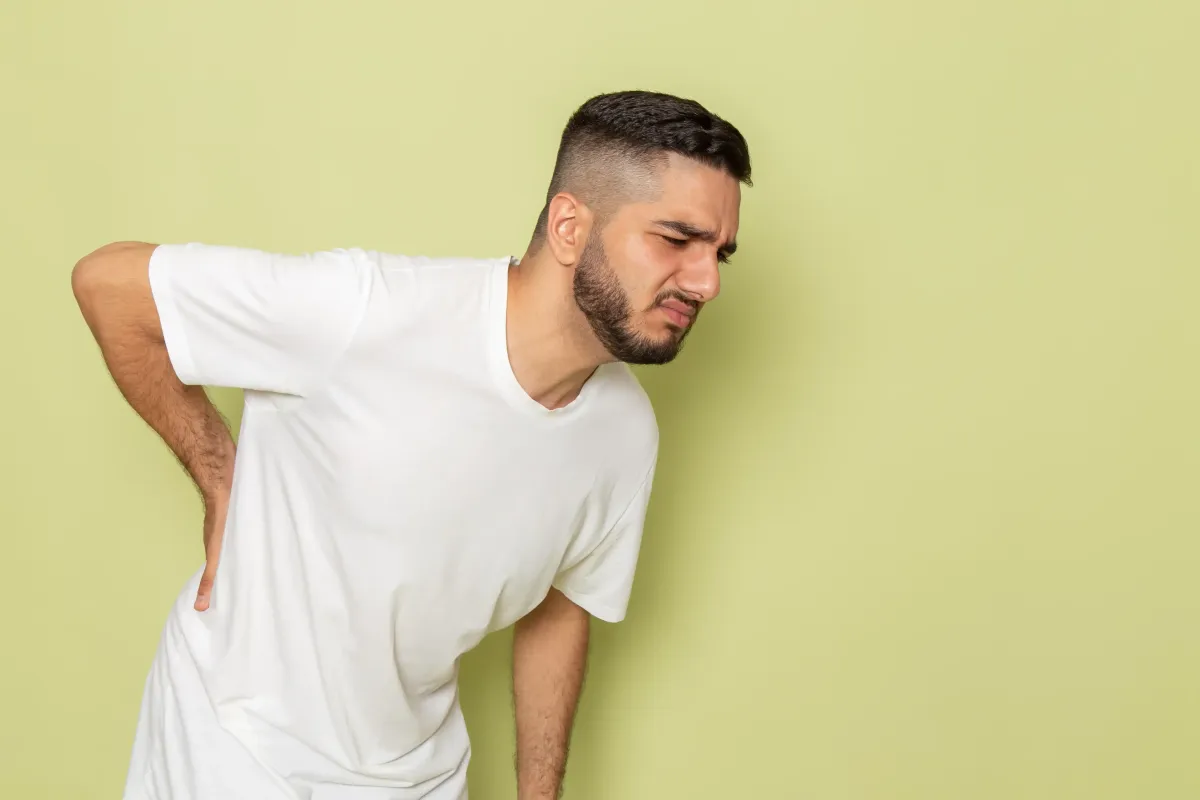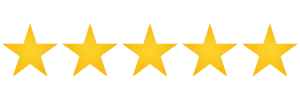Bulging Disc Treatment in New Jersey
Clifton Physical Therapy

What Is a Bulging Disc?
Bulging discs, also called disc protrusions, are a common spinal condition that can affect people of all ages. The spine is made up of vertebrae, which are small, round bones cushioned by discs that act as shock absorbers. Each disc consists of a tough, fibrous outer layer and a soft, gel-like center. Over time, the outer layer can weaken due to natural aging, daily wear and tear, or sudden injuries. When this happens, pressure from the inner gel pushes outward, causing the disc to bulge in one direction.
If not addressed, a bulging disc can progress to a tear in the outer layer, known as a herniated disc. Many bulging or herniated discs cause no symptoms, but if the disc presses on nearby nerves or the spinal cord, it can lead to discomfort or functional problems.
Symptoms of a Bulging Disc
Because bulging discs often do not immediately affect nerves, many individuals remain unaware of their condition. However, when a disc presses on a nerve, symptoms may include:
Pain radiating through the arms or legs
Localized pain near the affected disc
Muscle weakness, particularly in the lower body
Numbness or tingling that may spread along the nerve
A sensation of heat
Neck stiffness or discomfort
Common Locations for Bulging Discs
The symptoms of a bulging disc often depend on its location along the spine. Most bulging discs occur in the lower back (lumbar spine), particularly between L4–L5 and L5–S1. These can irritate the L5 or S1 spinal nerves and may contribute to sciatica pain, as the sciatic nerve receives signals from L3 through S3.
Bulging discs can also appear in the neck (cervical spine). Compression in this area may result in neck pain that radiates to the shoulders, shoulder blades, arms, or hands.
Causes and Risk Factors
Bulging discs occur when the disc’s outer layer weakens, allowing the inner gel-like core to push outward. While aging naturally reduces water content in discs and makes them more brittle, other factors can accelerate degeneration.
Common risk factors include:
Genetic predisposition
Sedentary lifestyle or obesity
High-impact or repetitive sports
Repeated or awkward movements
Poor posture
Smoking or excessive alcohol use
Traumatic injuries
Why Non-Surgical Treatment Works — Evidence from Research
If you’re in New Jersey and dealing with a bulging disc, it's worth knowing that conservative (non-surgical) treatments are often very effective — and strongly supported by scientific evidence.
A systematic review and meta-analysis found that physiotherapy interventions significantly reduce pain and disability in people with lumbar disc prolapse.
Therapies such as exercise, manual therapy, lumbar traction, and electrotherapy were shown to work by biomechanical mechanisms: helping to “open” spinal foramina (nerve exit passages), restore intervertebral space, and even promote negative intradiscal pressure to potentially coax the disc nucleus toward the center.
For cervical (neck) disc problems, active therapeutic exercises — especially repeated cervical retraction (chin tucks), extension, and lateral flexion — changed the geometry of intervertebral foramina (nerve openings), increasing their area over an eight week program.
In patients with cervical radiculopathy (nerve root irritation), a combination of manual therapy plus exercise significantly improved pain, range of motion, and sensory thresholds compared to minimal or sham interventions.
For lumbar radiculopathy, nonsurgical spinal decompression therapy, added to routine physical therapy, showed not only better pain reductions but also measurable decreases in herniated disc size on MRI.
Clinical guidelines for lumbar disc herniation endorse non-surgical treatments — exercise and traction, for example — as strongly recommended, even if high-quality RCTs remain relatively few.
Bulging Disc Exercises and Physical Therapy
Physical therapy plays a crucial role in managing bulging discs by strengthening supportive muscles, improving mobility, and reducing nerve pressure. Specific exercises can help stabilize the spine, relieve discomfort, and prevent further injury.
Chin Tucks
Chin tucks target the deep neck muscles and encourage proper alignment of the cervical vertebrae, which can reduce pain and improve neck strength over time.
Sit or stand tall, imagining a string gently pulling the top of your head upward.
Keep your neck straight and gently draw your head backward, creating a “double chin.” You should feel the muscles under your chin engaging.
Repeat 10 times, 10 sessions daily.
Neck Extensions
This exercise helps activate neck muscles safely and teaches the body that movement is not harmful, even with a disc issue.
Begin on your hands and knees or on an exercise ball.
Slowly arch your neck upward as far as is comfortable, without causing pain.
Hold for 3 seconds, then return to a neutral position.
Perform 10 repetitions, 10 sessions daily.
Cervical Joint Mobilizations
Gentle mobilizations can improve movement between individual cervical vertebrae and reduce stiffness.
Place a rolled towel behind your neck.
Hold both ends and take up the slack.
While performing a chin tuck, gently pull forward with your hands.
Return to the starting position and repeat 10 times, three sessions per day.
Trapezius Stretch (Lateral Stretch)
Tight trapezius muscles often accompany neck pain. Stretching them can relieve tension and improve comfort.
Sit or stand tall and tilt your head to bring your ear toward your shoulder.
Hold for 10–20 seconds, then switch sides.
For a deeper stretch, gently guide your head with your hand.
Perform 2 sets, 2–3 times daily.
Scapular Setting Stretch
Correcting posture and opening the chest reduces pressure on bulging discs and relaxes surrounding muscles.
Bullet List 1·
Sit or stand, placing your fingers on your shoulders.
Roll your shoulders back, drawing your shoulder blades down and together, as if placing them toward your back pockets.
Hold for 10 seconds and repeat several times throughout the day, especially after prolonged sitting.
Community Insights on Bulging Disc Recovery
Many individuals recovering from bulging discs have shared their experiences online. Their insights highlight the effectiveness of physical therapy and consistent exercise:
“Bulging disks are difficult to treat on your own, and medication. I recommend PT heavily over chiropractics and avoiding playing golf until the disc bulge has been reduced.” — Golf Forum User
“I've had back issues, MRI showing bulging lumbar disk. For me, physical therapy was very helpful, reducing the inflammation, getting the muscles sorted out, and even structurally doing exercises that help keep the disk in place. And following the course of PT, staying on an exercise regimen to strengthen the core and keep flexible, has been important.” — Barbell Medicine Forum
“I got to PT and was given exercises like the cobra pose, side planks, some spinal rotation exercises, and air squats, making sure not to buttwink. The PT said to avoid deadlifting and to not squat weight again until I had no pain in my lower back.” — Barbell Medicine Forum
“The physical therapist I saw was adamant that for a bulging disc, it’s all about planks on your side. The stronger you make your stomach, the stronger you’ll make your back.” — Golf Forum User
“Recently, I am working with a great physical therapist who has me focused on increased posture and decompression exercises like hanging from a pull-up bar. Decompression has helped tremendously and my pain is much less now.” — Golf Forum User
Call us at (973)-241-1338 to book your appointment today.
What others are saying
"I recently had ankle surgery and Clifton PT has been nothing short of amazing! My goal was to get back to playing soccer as quick as possible before the college season started and so far I'm right on track. Izzy, Bianca, Tiff, and John have gone above and beyond to make sure I'm back to 100%. Couldn't be more grateful to be treated by the best team ever!." - Nat Rufino

All the therapists at Clifton Physical Therapy are awesome, but I spend most of my time with Izzy and Bianca—and they’ve been amazing. They’re enthusiastic, knowledgeable, and always take the time to explain what I’m doing and what my issues are. Their positive energy and clear communication make a big difference in my recovery." - Bryan Tompkins

"Going Clifton physical therapy was one of the best thing that came out of my back pain! Every single staff member is amazing and cares for your recovery! I have been with them for the past couple of months and now continuing their workout program! I can’t recommend them enough! Tiffany, Izzy, Bianca and everyone else I have worked with there! Can’t rave about them enough!!." - Monica Mehta

"Clifton Physical Therapy has been a great place for me to heal my meniscus tear. The staff is very knowledgeable and friendly, and has been extremely helpful in guiding me through my recovery. I highly recommend their services.." - Kelly Bevando

Clifton Physical Therapy
✆ Phone (appointments): (973)-241-1338
Address: 1059 Bloomfield Ave, Clifton, NJ 07012
